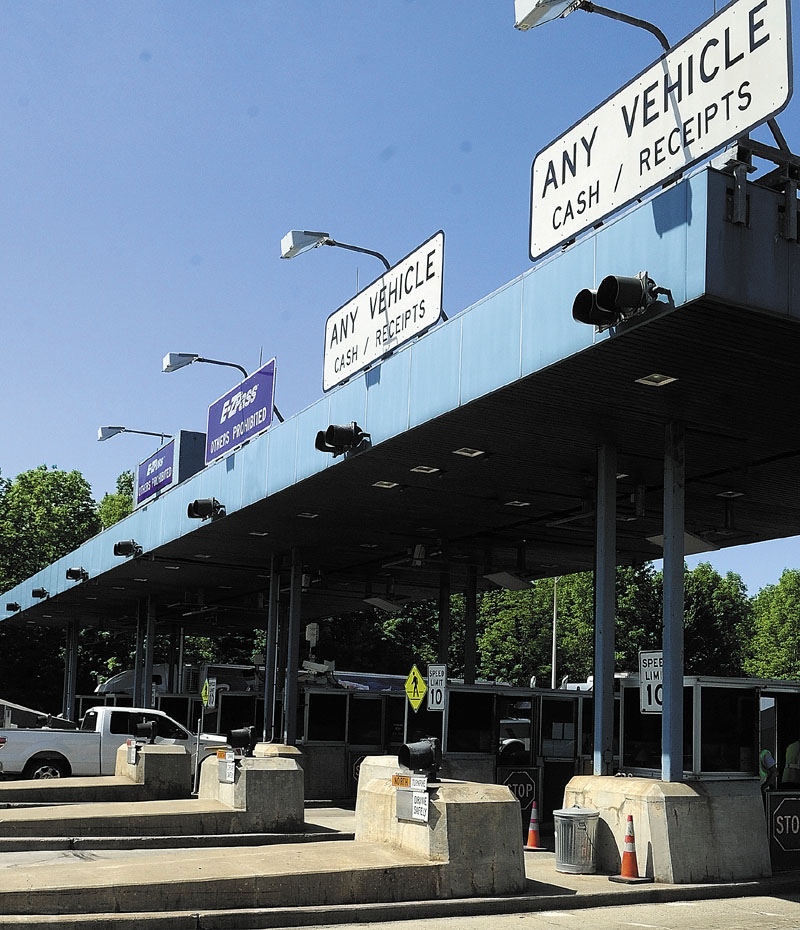PORTLAND — For several decades, ridership on the Maine Turnpike increased like clockwork by an average of 2.5 to 3 percent every year. Toll revenue did the same.
That steady increase was the basis for the Maine Turnpike Authority’s budget decisions, including whether to borrow money for big projects — like the $135 million widening that was carried out in southern Maine about a decade ago.
Then 2008 came. The economy tanked. Gas prices soared. Unemployment crept up. Ridership and revenue flattened out, then started to decline. Thus the stage was set for 2012 and the current proposal by the turnpike authority to increase tolls on the 106-mile highway from Kittery to Augusta.
The first public hearings on the proposed toll hikes take place next week: Tuesday in Auburn, Wednesday in Portland and Thursday in Saco.
In order to cover its yearly operating budget, its short-term maintenance plan and its long-term debt service, authority officials said they are forced to once again consider toll increases. Current revenue simply isn’t enough.
The option favored by turnpike officials would add $1 to the toll plaza in York, 75 cents in New Gloucester and West Gardiner and 50 cents each at the Wells northbound and Gray southbound tolls. The rate for EZ-Pass users would increase by 20 percent, from 6.7 cents to 8 cents per mile. Other options would lower or raise tolls in varying amounts in different locations with the goal of generating about $26 million in annual revenue.
The final decision, which rests with the authority’s board of trustees, could come as early as July. Any toll increases likely would take effect by November.
Board chairman Daniel Wathen, an Augusta attorney, said he’s seen all the options, but is “suspending judgment until I hear from the public.”
The major need to increase revenue, MTA officials said, is the widening project that was approved by Maine voters in 1997. Under that project, 30 miles of highway south of Portland was widened from four lanes to six to accommodate traffic growth. Dozens of bridges along the way were rebuilt as well.
To pay for the project, the turnpike authority borrowed millions of dollars in several stages. At the time the bonds were issued, the MTA relied on historical ridership and revenue projections, said the authority’s chief finance officer, Doug Davidson. It figured out what the debt service would be during the 30-year term of the loan and anticipated that tolls would cover that debt.
The authority now generates a little more than $100 million in toll revenue every year. Operating expenses and debt exceed $130 million. Instead of the historic annual 2.5 increase in revenue, the turnpike actually took in less money from 2010 to 2011 and it now projects smaller increases of about 1 percent annually until 2025.
Even with the unexpected drop in revenue, though, there was always an understanding that future riders would help pay for the widening, said the authority’s executive director, Peter Mills.
But it’s not just debt service that’s increasing. Projections provided by the MTA show that its operating expenses are expected to increase substantially between now and 2025. Mills said that reflects the cost of materials such as concrete and asphalt but also increased labor costs. The agency’s annual operating budget has been streamlined under Mills’ watch and he’s been able to save additional money by refinancing bonds.
Some may question the authority’s reasoning in borrowing such large amounts, but bonds are woven into the turnpike’s history.
The original stretch from Kittery to Portland was built in the 1940s with a $20.6 million bond. In 1955, the road was extended 66 miles to Augusta. That cost $74 million. For nearly three decades, those two bonds were the MTA’s only debt. A small loan of $7.5 million was taken out in 1982, but the next big wave of borrowing didn’t begin until 1991, the first time the widening project was proposed.
From 1997 to 2003, the authority amassed more than $200 million in debt to pay for the widening project. Some of that debt has been refinanced but most of it will be on the books for the next 10 to 20 years. Much of it is interest.
Davidson said bonds secured by the MTA over the years reflected competitive rates at the time. But could the turnpike have waited until it had toll revenue in the bank before starting projects? Mills said that might sound good, but it’s not practical.
Still, he said he understands toll fatigue. The latest proposal would be the third increase in less than a decade. Many turnpike users have taken advantage of EZ-Pass and Mills said the most recent proposal creates a volume-based discount to entice more.
MTA officials also understand that some travelers might avoid the turnpike for awhile. Davidson said ridership historically decreases temporarily after a toll increase, but that only lasts six months or less before riders come back.
Mills also said turnpike riders can take comfort in a silver lining: If all goes according to plan — and that could be a big if — the next toll increase won’t be needed until 2034.
Send questions/comments to the editors.




Comments are no longer available on this story